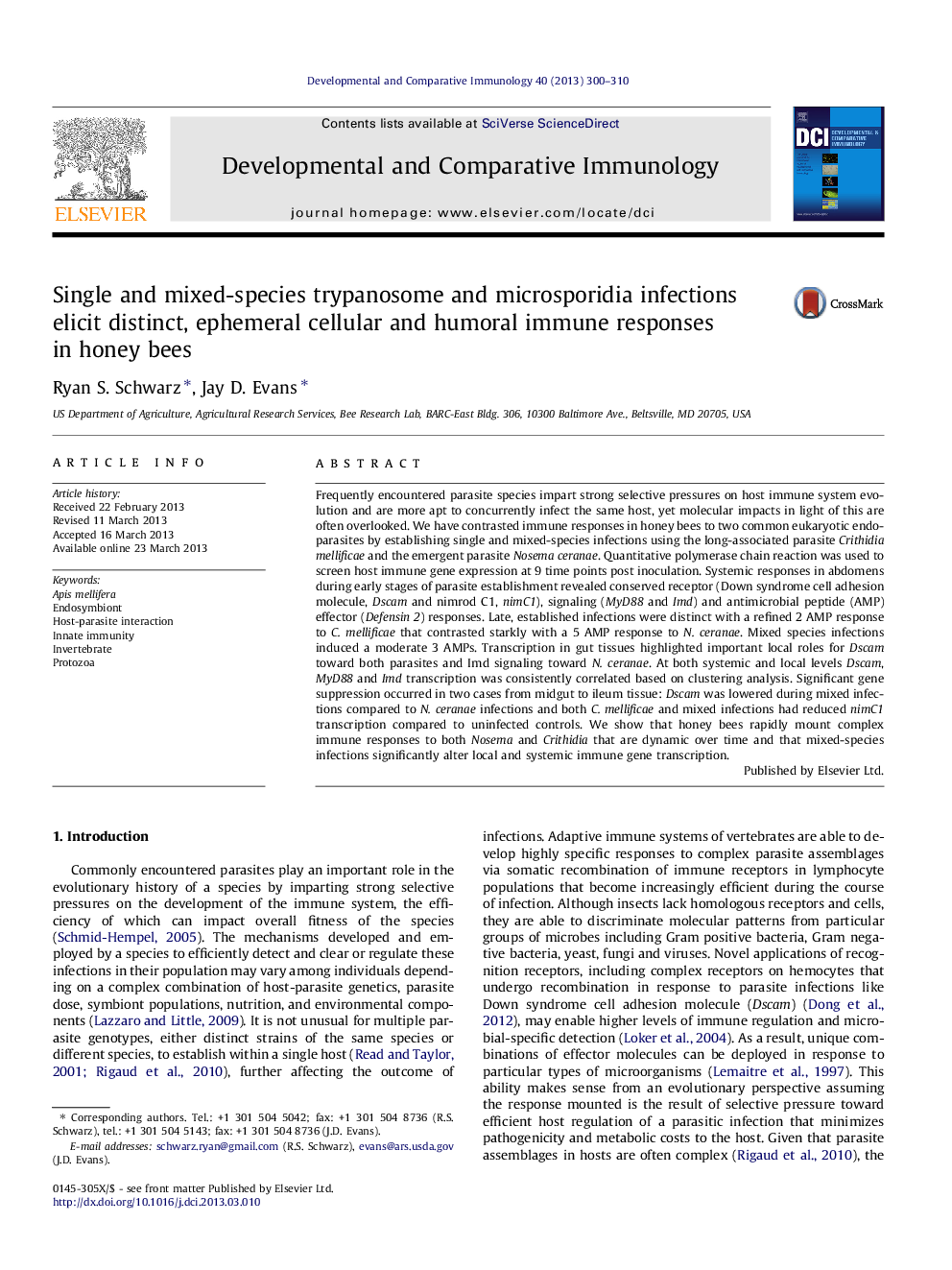| کد مقاله | کد نشریه | سال انتشار | مقاله انگلیسی | نسخه تمام متن |
|---|---|---|---|---|
| 2429069 | 1553579 | 2013 | 11 صفحه PDF | دانلود رایگان |

• Initial bee immune responses to gut parasites are rapid (6 h) and largely conserved.
• AMP responses are refined toward long associated symbiont Crithidia mellificae.
• AMP responses are diverse toward emergent pathogen Nosema ceranae.
• Imd signaling and hypervariable receptor Dscam are induced in gut tissue.
• Immune profiles are altered during concurrent parasite infections.
Frequently encountered parasite species impart strong selective pressures on host immune system evolution and are more apt to concurrently infect the same host, yet molecular impacts in light of this are often overlooked. We have contrasted immune responses in honey bees to two common eukaryotic endoparasites by establishing single and mixed-species infections using the long-associated parasite Crithidia mellificae and the emergent parasite Nosema ceranae. Quantitative polymerase chain reaction was used to screen host immune gene expression at 9 time points post inoculation. Systemic responses in abdomens during early stages of parasite establishment revealed conserved receptor (Down syndrome cell adhesion molecule, Dscam and nimrod C1, nimC1), signaling (MyD88 and Imd) and antimicrobial peptide (AMP) effector (Defensin 2) responses. Late, established infections were distinct with a refined 2 AMP response to C. mellificae that contrasted starkly with a 5 AMP response to N. ceranae. Mixed species infections induced a moderate 3 AMPs. Transcription in gut tissues highlighted important local roles for Dscam toward both parasites and Imd signaling toward N. ceranae. At both systemic and local levels Dscam, MyD88 and Imd transcription was consistently correlated based on clustering analysis. Significant gene suppression occurred in two cases from midgut to ileum tissue: Dscam was lowered during mixed infections compared to N. ceranae infections and both C. mellificae and mixed infections had reduced nimC1 transcription compared to uninfected controls. We show that honey bees rapidly mount complex immune responses to both Nosema and Crithidia that are dynamic over time and that mixed-species infections significantly alter local and systemic immune gene transcription.
Journal: Developmental & Comparative Immunology - Volume 40, Issues 3–4, July–August 2013, Pages 300–310